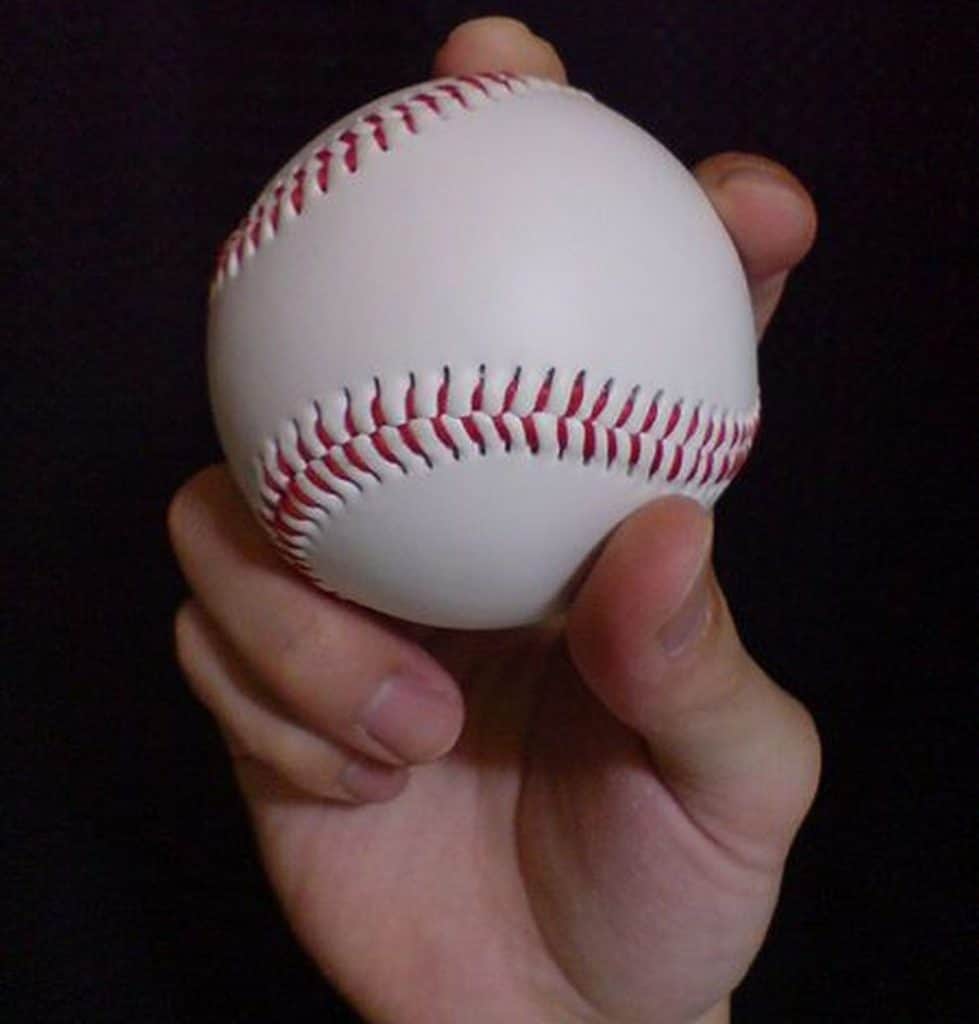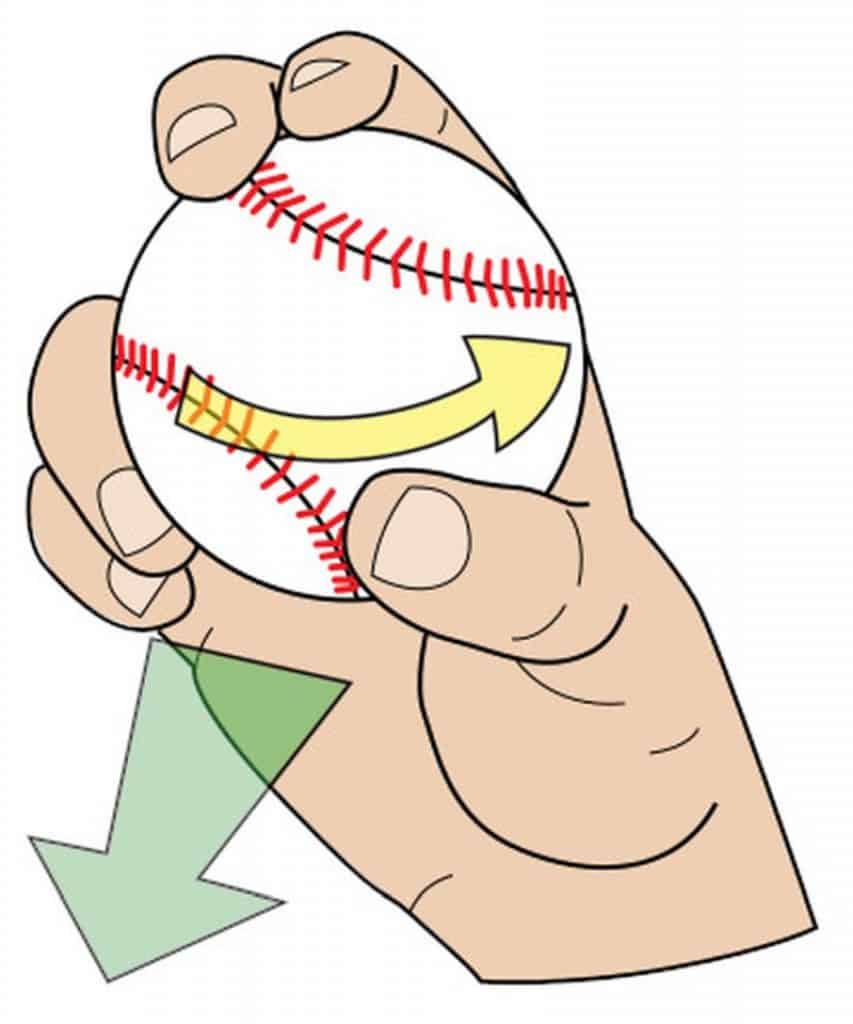Sinker vs Slider – What’s The Difference? (Solved!)
Every baseball game revolves around the non-stop battle of wit and skill between pitchers and batters.
To be successful, pitchers have to constantly find ways to outsmart their opponents.
The best pitchers use a wide variety of different pitches to keep the batters guessing what is going to be thrown at them next.
While watching a ballgame on TV, you hear broadcasters talk about fastballs, curveballs, sinkers, sliders, cutters, or changeups.
However, even the more avid baseball enthusiast often struggle with identifying different pitches.
The throws one pitcher has in his bag can differ in speed, movement, and break.
Getting to know various types of pitches is important for both pitchers and batters but it also makes watching a game more fun for us as spectators.
In this article, I’ll compare sinker vs slider, and try to help you learn the difference between the two.
Table of Contents
What is a Sinker?
Sinker pitches, logically, got their name because the ball sinks on its way to the home plate.
They usually lead to a lot of or swing-and-missed or barely hit ground balls as they take a hard dive to the ground at the very last minute before the hitter has a chance to connect.
Due to their deceptive trajectory, sinkers often trick batters into going for the balls they can’t hit.
A sinker is considered a variant of the two-seam fastball, and many people even think that the two are the same.
However, a classic two-seamer has more of a left to right (or vice-versa) movement, while the sinker has more vertical drop.
Compared to regular fastballs, sinkers have a bit less speed and end their drop 6 to 8 inches lower.
Still, they are fastballs, and throwing them to fly at more speed is necessary to achieve a hard break.
How to Throw a Sinker?

Throwing a sinker doesn’t differ much from throwing a traditional fastball. The stance the pitcher assumes and the grip are more or less the same as with the 2-seam fastball.
The grip involves putting the index finger over the closest seam, placing the middle finger next to it, and the thumb at the bottom of the ball for a firmer grip.
The thumb should line up vertically with the index finger.
To throw a sinker, the pitcher needs to grip the baseball tighter than he normally does up until the point of release.
This should provide more friction and more air resistance which causes the ball to sink. The throwing motion when pitching a sinker should be “over the top”.
The pitcher should twist its palm to the right if he’s right-handed at the point of release.
For lefties, it’s the other way around. How much the pitcher twists his wrist will determine how deep the ball will sink.
What is a Slider?

The slider is a type of breaking ball, and one of the most effective ones. This means that with the slider, the movement matters more than the speed.
They’re thrown with less velocity than a fastball, but still faster than the curveball. When thrown, a slider moves sideways.
For right-handed pitchers, it will move from right to left and for lefties from left to right.
Using the clock visual, the slider usually has a 2-8 shape if thrown with the right hand, and a 10-4 shape when pitched using the left hand.
This pitch is often confused with the cutter and they are pretty similar.
Still, the slider has a more sweeping and larger movement, while the cutter makes a harder vertical and horizontal break.
With the slider, there’s typically no sudden break, instead, it’s happening from the beginning to the end of the pitch.
How to Throw a Slider?
To grip the ball for the slider, first place the middle and index finger tightly together over the outer seam of the ball.
The thumb should be on the opposite seam of the ball, towards the inside.
The pitch will have more drop-off, the closer the thumb is to the other two fingers.
The ball should be held in a way so that the pressure is on the index finger giving you a tighter grip on the outer third of the ball.
Similar to the curveball, the slider is pitched with a snap of the wrist and spin.
When throwing the ball, you should flex the wrist forward to ensure the proper release. At the point of the release, snap the wrist downwards to cause the ball to drop near the plate.
Sinker vs Slider – What are the Differences?
Both sinker and sliders are tricky pitches designed to throw batters off balance. However, each of these pitches achieves it in a different way.
The main differences when comparing sinker vs slider are the velocity and the trajectory of the ball.
As the sinker is a type of fastball, it travels towards the home plate at a greater speed.
The slider pitch is typically 6 to 8 mph slower.
When throwing a sinker with a lot of backspin, the ball seams catch the air in a way that causes it to suddenly dip as right in front of the batter.
Before they reach the home plate, sinkers manly keep the straight path.
The slider moves away from a pitcher’s arm-side as it flies, but doesn’t have as much movement as the curveball.
Finally, as I explained above, the sinker and slider have different grips on the ball and throwing motions.
Conclusion
There’s more to being a good pitcher than just walking to the mound and throwing the ball as hard and as fast as you can.
The good pitcher should be able to throw hard, but also to be precise and to learn how to add some spice to his pitches.
Tricking the batter and catching him off balance is the key to a successful pitching performance.
And, the best way to do it and keep hitters on their toes is to mix the pitches up a bit.
Here’s where sinkers and sliders are particularly useful.
They’re a great way to deceive the opponents as they have similar throwing motions to fastballs in the case of the sinkers and curveballs in the case of the sliders.
So, it’s no wonder that they’re one of the most favorite weapons in the arsenal of many MLB pitchers.




